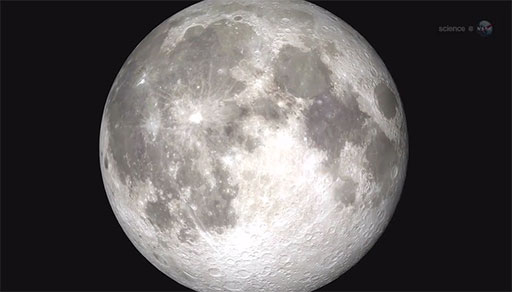3.1 One ‘big’ impact
Watch this NASA video reporting the event of 17 March 2013. The commentary for the video omits to point out that the video of the flash was made by imaging the part of the Moon that was in darkness and that the faintly visible Moon in the video is illuminated only by light reflected onto the Moon from the Earth. Faint flashes occurring on the sunlit part of the Moon would be almost impossible to see. The video refers to ‘explosions’, which is not strictly true – the crater is excavated by a shock wave generated at the point of impact. The flash is the sudden glow caused by the incoming energy being turned into heat. Listen out for the estimated size of the crater in the video commentary.
The new crater has now been imaged, and you can swipe across a before and after comparison [Tip: hold Ctrl and click a link to open it in a new tab. (Hide tip)] captured by the Lunar Reconnaissance Orbiter Camera. (This can be a little fiddly on small screens and will work best on desktops/tablets.)

Transcript
[MUSIC PLAYING]
If you wanted to look into this further, you might find the following link of interest: ‘Biggest observed meteorite impact’ hits Moon. A report of an even bigger impact onto the Moon on 11 September 2013, seen by Spanish astronomers.
